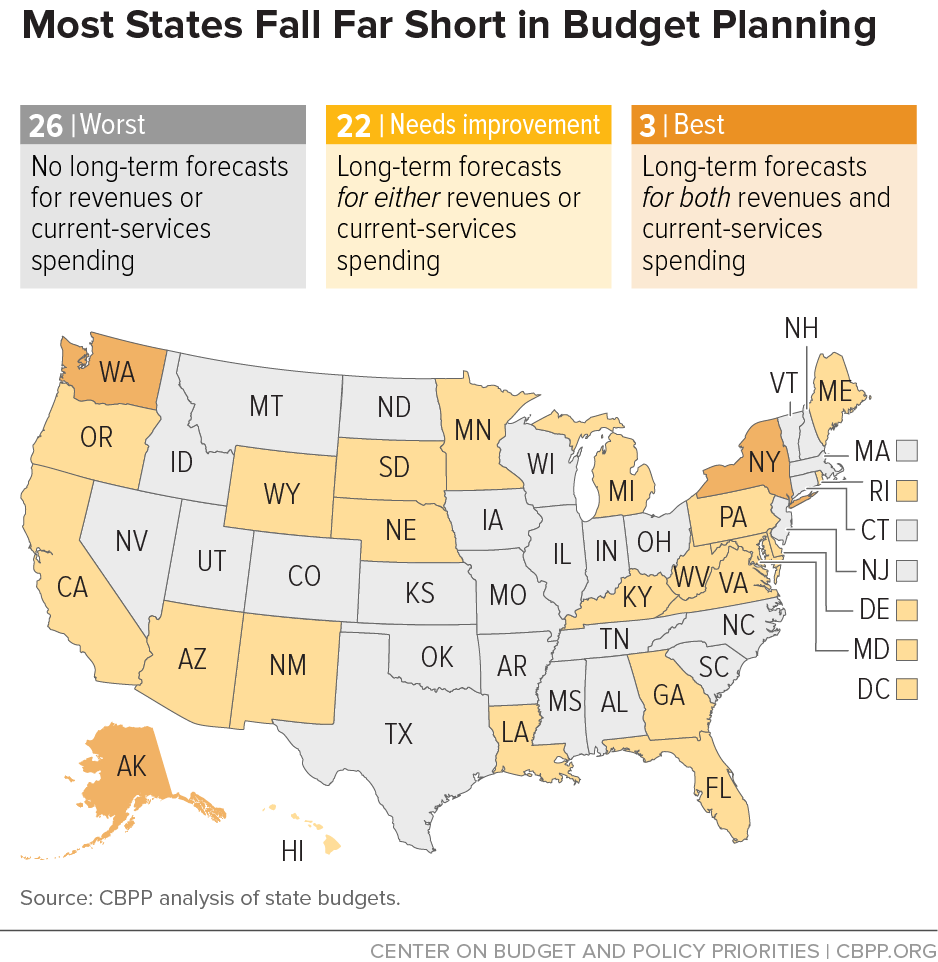BEYOND THE NUMBERS
State policymakers need reliable, multi-year information about revenues and program costs to make sound decisions about how best to provide for the high-quality education systems, roads and bridges, and other public investments that build a foundation for strong economic growth. Three key pieces of data — revenue forecasts, budgets that show the cost of maintaining current services, and cost estimates of legislation — can help, we explain in two new papers (here and here).
States could plan more effectively with the following information:
- A stronger grasp of likely revenues. Projecting how much revenue the state can expect to collect beyond the next couple of years enables policymakers to anticipate and respond to predictable changes in revenue. The governor and legislature should produce these estimates in partnership to lessen the likelihood of a political fight over the correct revenue number.
- A stronger grasp of real costs. Knowing the cost of maintaining the current level of services beyond a single year gives policymakers a heads up when major cost increases are coming before it’s too late to avoid a fiscal emergency.
- Cost estimates of all bills that will affect revenue or spending. These estimates — often called fiscal notes — should project long-term impact and should be produced by a non-partisan entity, revised during the legislative process, and posted online.
Only three states — Alaska, New York, and Washington — use both multi-year revenue and multi-year current services budget forecasting, at least for broad categories of spending and revenues (see map). And just five states — Iowa, Louisiana, Maryland, Oregon, and Texas — and the District of Columbia meet all of the best practices around producing cost estimates of legislation. Other states could improve their practices with modest effort.
Of course, improving the information available to legislators and the public doesn’t guarantee better policy outcomes. But without the information states need to plan, they’re blind to the impact of many of their budgeting decisions, making poor choices more likely and putting their futures at risk.
Click here to read Better State Budget Planning Can Help Build Healthier Economies and Better Cost Estimates, Better Budgets.

